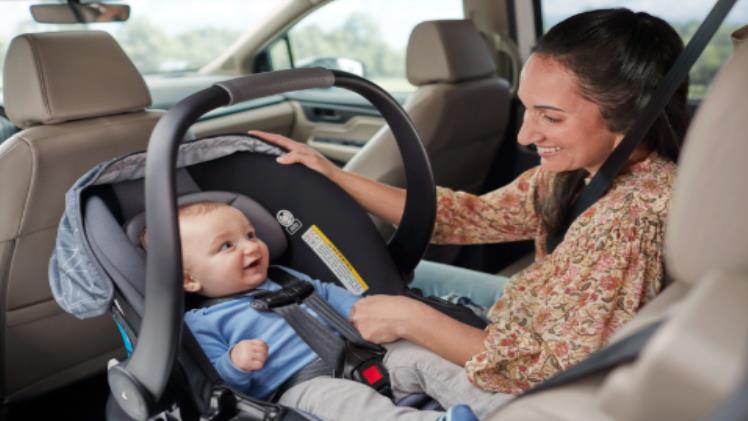From Newborn to Toddler: A Parent’s Ultimate Guide to Car Seat Safety
Introduction
One of the most important aspects of travelling with your child is getting them in and out of the car, which is why using the proper คาร์ซีท – https://babyhillsthailand.com/car-seat-for-baby/ plays a significant role. A well-fitted and properly installed car seat can give you peace of mind in every precious mile from the very first ride home from the hospital to those energetic toddler adventures. Everything you ever wanted to know about car seat safety is included in this guide for parents who travel safely!
Understanding Car Seat Stages
Kids tend to quickly outgrow their equipment, and as they grow so do their safety needs. Car seats are generally for specific age, weight and height ranges which requires parents to transition through common stages:
- Infant Rear-Facing Car Seat: No doubt the best option for infants, typically newborn to 12 months in age, and provide optimum support for those fragile heads; necks, and spines. Safety experts recommend keeping your child in a rear-facing position as long as possible, at least until age 2 or the manufacturer’s stated maximum weight and height limits.
- Convertible Car Seat: Ideal for growing with your child, a *Convertible Car Seat * can switch from rear-facing to forward-facing. And it is why this is one of the lowest cost options for UCA.
- Forward-Facing Car Seat with Harness: Ideal for toddlers who have exceeded the rear-facing constraints, these seats provide a harness system that secures your child during travel.
- Booster Seat: Made for older toddlers and preschoolers, booster seats raise a child to the height where the vehicle’s seat belt fits properly across a shoulder and lap.
Why Back-Facing Seats Are Safer for Longer
For example, a rear-facing * คาร์ซีท significantly reduces the risk of serious injury in an accident because it spreads the load more evenly across the child’s body. The American Academy of Pediatrics, as well as many international safety organizations, now recommend children ride rear-facing until they outgrow a car seat by height or weight limits of the seat, even if their legs are slightly touching the back of the vehicle seat. When in doubt, do it safely even if there is some small discomfort.
Proper Installation Matters
A car seat, no matter how good it is, will not be able to provide proper protection if it was incorrectly installed. Studies have shown that most car seats are not used or installed correctly. To ensure proper installation:
- Always be sure to read the car seat manual and your vehicle’s owner’s manual.
- Choose one or the other: seat belt or LATCH (Lower Anchors and Tethers for Children) system, never both — unless permitted by the car-seat manufacturer.
- The seat should not move more than 1 inch in any direction when secured.
- Rear-facing: The harness straps should be AT or BELOW the baby’s shoulders, for forward-facing they should be at or above.
Harness Safety Tips
It is very important to have a harness for safety. If the harness is tight enough, there should be no slack remaining that you can pinch at the shoulder. The chest clip must be at the child’s armpit level, not up on the stomach or down on his neck. Do not use bulky jackets, as they can leave harness slack and loosen if necessary to fit over the baby as well.
Common Mistakes to Avoid
A lot of times parents do things that are actually very unsafe. Here are some you would want to be aware of:
- Prematurely switching to forward-facing: Rear-face your child until he is at least two years old.
- Buying an expired car seat: Car seats have expiration dates, typically around 6–10 years from manufacture.
- Second hand car seats without an inspection: Do not use a second-hand **คาร์ซีท unless you are certain it has no history of being in a crash and is up-to-date with the current safety standards.
- Loose installation: A car seat that moves in a crash.
- Wrong harness height: the harness will not protect the head and neck of your child
When to Replace Your Car Seat
The car seat needs to be replaced if it has been in a moderate or severe crash, reached its expiration date, or shows visible damage. Check your it คาร์ซีท regularly for broken buckles, worn straps and plastic that has visible cracks.
Teaching safety as they get older
This is a great time to start teaching the child safety, as your child starts transitioning into the booster stage. Encourage them to sit properly with the seat belt on at all times. Good practices as a child will lead to safe car travel habits later in life.
Final Thoughts
Your child develops from a tiny newborn, through to becoming a confident toddler – but along the way their safety needs will change and you as parents, need to adapt how you can keep them safe. In the case of คาร์ซีท – https://babyhillsthailand.com/car-seat-for-baby/, select, install and take an advice from a specialist to reduce risk in travel. Every travel short or long, offers the wallet an opportunity to be more secure. With some education and a bit of extra effort on your part, you can do the same — and keep your most precious passenger as safe for the ride as possible.







